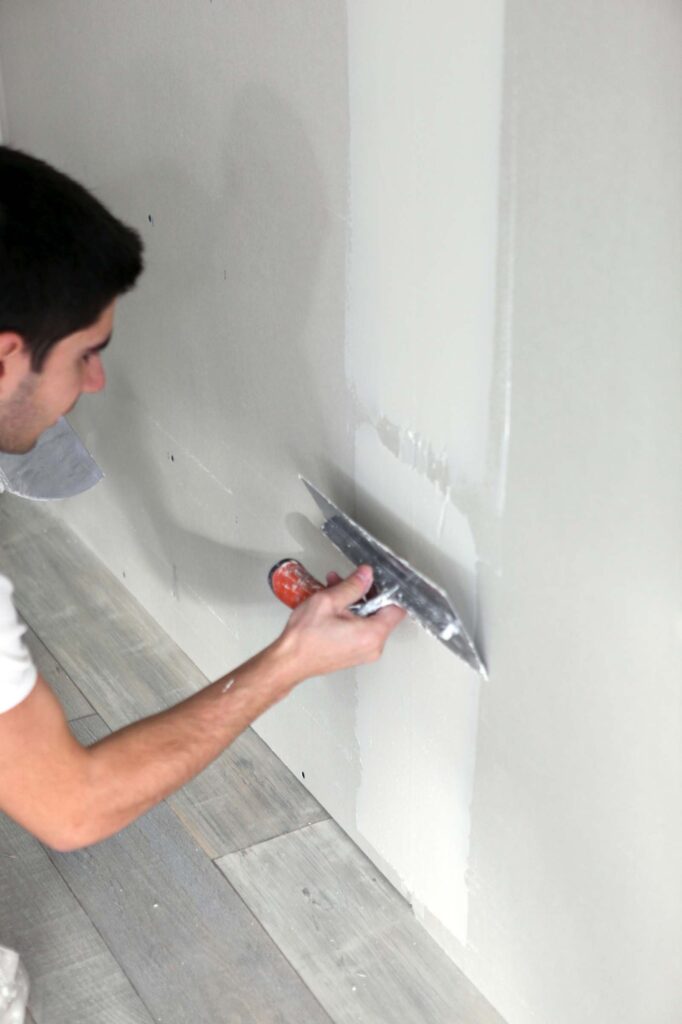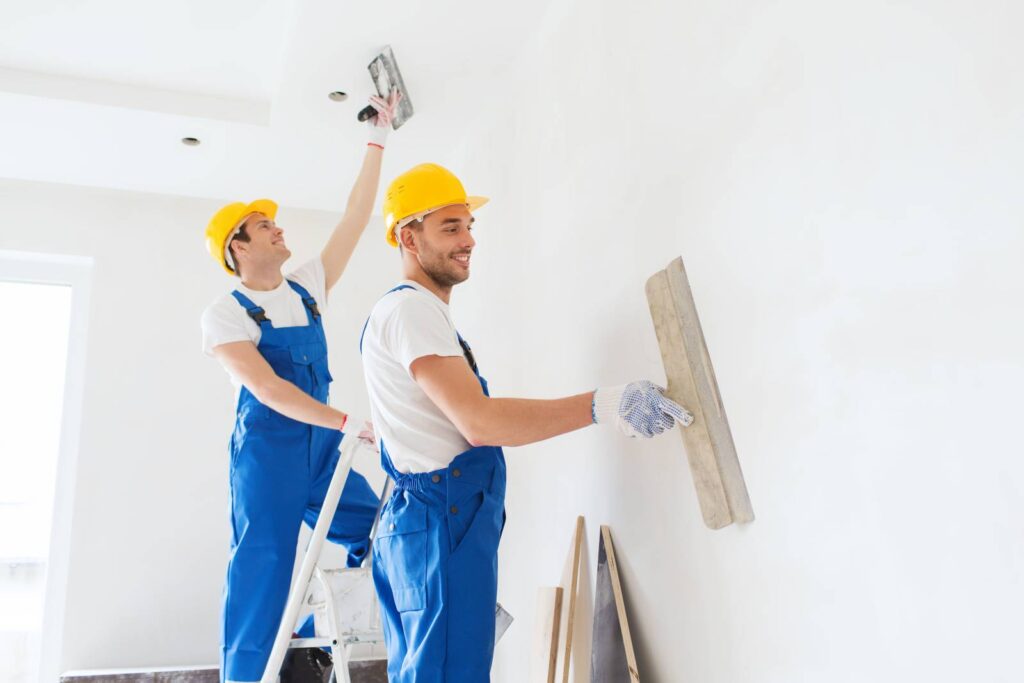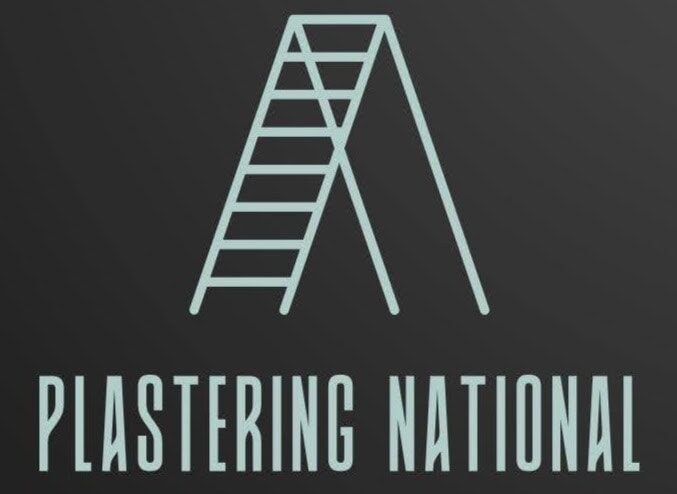Drywall, often called pressed gypsum boards, quickly replaced plaster as the most popular interior wall finishing material. Therefore, you might associate plaster with older homes and assume that it is exclusively used for restoration purposes.
But this age-old material still has major benefits for contemporary uses. In light of this, it is important to weigh the pros and cons of plaster before deciding to use it in a remodel or new construction.
The product is used to smooth the margins of a stone wall, giving it a more finished appearance.
Plastering bricks and stones not only improves their appearance, but also makes them more watertight and windproof.
Plasters differ in application and use according on the intended finish, components, popularity, and needed percentage. Lime plaster, cement plaster, mud plaster, and gypsum plaster are just a few of the varieties available.
Gypsum plaster has surpassed lime and cement plasters in popularity in recent decades. Features, advantages, and disadvantages of gypsum plaster, as well as its proper application, will be covered in this article.
Dry wall is the quicker and cheaper choice. Drywall is the most used material for wall covering due to its low cost and the ease with which professionals can install it.
Drywall panels, on the other hand, are not as good as plaster walls at blocking out noise because of their thinner composition. Drywall, on the other hand, is superior in energy efficiency since it can be insulated in many different ways.

Both Plaster’s Pros and Cons
Gypsum Plaster is a soft sulphate mineral composed of calcium sulphate dihydrate, or CaSO4:2H20. It’s a frequent ingredient in sculpture clay, plaster, and as a fertiliser.
Gypsum, which is quite similar to chalk, is a very lightweight material.
In nature, this compound crystallises. There have been many developments in building technology and applications in recent years, all with the aim of boosting efficiency and enhancing the quality of life for building occupants.
Plaster made of gypsum and sand is more older than cement, however it is rarely used in building.
Gypsum has established itself as a great material for interior architecture due to its many desirable properties.
Everywhere you look, you’ll see beautiful stucco houses with smooth walls and muted tones. Defining stucco is a prerequisite before discussing the pros and cons of stucco construction.
Stucco refers to a wall finish that is similar to plaster but is given a different name. Thus, stucco is also known as plaster siding. Interiors may also feature stucco treatments, despite the material’s more common use on exterior walls.
In order to achieve a professional look while decorating walls with modern materials, the surface must be completely smooth. Therefore, all defects must be fixed and walls must be plastered at completion of construction or prior to beginning repair.
Reaching this stage requires little more than some hands-on experimentation, some research into available tools, and an openness to expert advice.
Even if processing an entire wall by itself is a very labor-intensive process, a simple master with some construction experience may be able to do it.
Benefit: Longevity
Plaster, when properly put and finished, is stronger and more long-lasting than drywall.
Due to a chemical reaction that occurs as water evaporates from the plaster mixture, strong linkages are formed.
This makes plaster a superior material for areas likely to experience rough treatment.
The strength of the completed plaster will be determined by the quality of the lath employed.
Metal lath or solid backing boards are gradually replacing thinner hardwood lath strips due to their greater durability.
Gypsum plaster has the benefit of reducing the weight of buildings
Drywall’s popularity has exploded in the past few years. The growing number of their fans may attest that their performance has been worthy of their adoration.
Some of the factors that have contributed to gypsum plaster’s meteoric rise to prominence over the past few decades are discussed here.
- When utilised in false ceilings and other cantilever designs, gypsum provides more strength than sand cement plaster because of its low weight. Stronger and more durable in the face of earthquakes and other natural disasters, its lighter construction also means better protection for the inhabitants. Moreover, gypsum is fire-resistant and non-combustible due to the high water content; this makes it an excellent choice for coating the inside walls of your home.
- For the reasons discussed below, many construction firms and home constructors are switching from using cement plasters to gypsum plasters.
- Gypsum plasters set in 25-30 minutes, but cement plasters take 15 days to settle; after 4 days, gypsum plastered walls are ready to be painted. Upon reaching full strength, gypsum plasters are ready to be used after 78 hours.
- Gypsum plaster has the advantage of being simple to apply to masonry surfaces. They are finished and don’t need any more attention.
- Gypsum plastered walls don’t require any further prep work, such as putty or whitewash, before being painted.
- Gypsum plasters, in contrast to sand cement plaster, generate a flat surface with squared-off corners.
- Since gypsum plasters don’t need to be cured using water, they can be applied 75% faster than cement plasters.
Plaster walls are solid and thicker, which is an advantage
When plaster is put correctly, it creates a strong and stable subfloor.
You’ll be painting right over this to make a statement with your personal aesthetic.
Plus, plaster can withstand being painted over without fear of damaging the walls, as moss does not stick to it.
The Benefits of Setup
Drywall dust is really noticeable when cutting and sanding. It takes many days to finish drywall to a smooth surface because of the drying time required between coatings of the joint compound used to cover the joints between the boards.
When the powdered form of plaster is mixed with water, the resulting substance does not produce any dust. It also doesn’t need to be sanded, and multiple coats can be put before the prior one is totally dry.
There’s no need to sand between applications, and multiple coats can be applied before the prior one is dry.
Plaster walls are quicker to finish and leave less debris behind, but they are also more challenging to instal due to the need for expertise and practise, as well as a wood lath or steel mesh substrate.
Gypsum plastering is much easier and quicker to put up than sand plastering. Moreover, gypsum only needs a brief period of time to dry after installation.
The typical drying period for cement plaster is 21 days, but this only takes three days at the most.
The construction time is cut down because of the fast drying and simple installation.
Benefit: a silky, ultra-polished surface
A smooth surface with perfectly levelled corners is the outcome of gypsum plastering, while cracks appear with sand cement plastering.
Walls that have been plastered with gypsum do not need putty before they can be painted, while cement plastering must. A whitewash may be necessary to cover up imperfections in cement plastered walls.
When applying a paint or wallpaper to a gypsum plaster wall, you’ll get the best results if you use a roller.
An added bonus is a lighter Plastering
In order to make tall buildings more earthquake- and hurricane-proof, architects and engineers from all over the world are attempting to reduce their weight.
Because of its low density and high compressive strength, gypsum plastering can be utilised in load-bearing regions while still reducing the building’s overall mass.
All across the world, gypsum plastering plays a vital part in the construction of skyscrapers.
Zero pollution is a major plus
Pollution is not released from plastered walls. When compared to a plastered wall, this kind of wall produces far less dust.
Benefit: It Looks Nice
Once you’ve plastered the walls and ceiling, you have many options for finishing them to suit your taste in décor.
For example, gypsum plasters can be used to dampen ambient noise and block outside noise transmission.
Therefore, buildings with high foot traffic, such hospitals, hotels, and offices, benefit greatly from gypsum plasters.
One drawback is that using plaster can speed up the building process
Plaster made from sand and cement needs 21 days to cure, during which time it will harden and settle. For 21 days, the plaster is sprayed heavily with water and allowed to dry. For the next 21 days, no work can be done on top of or in proximity to the wall.
Gypsum plastering is exempt from this lengthy waiting period. Since gypsum plaster only takes three days to dry and set, construction time is cut significantly.
Construction times can be cut dramatically if the building has multiple stories. It would take 21 days to plaster each floor with typical sand cement, but only three days with gypsum plaster.
Difficulty in hanging objects is a disadvantage
Stronger plaster has the disadvantage of being more difficult to nail or drill into, which makes it more challenging to decorate. We did, however, cover some useful pointers for mounting things to a plaster wall in this earlier essay.
You should know that putting a nail in a plaster wall might not do anything.
Appreciate the advantages and put up with the drawbacks, because you have a historic wall that is only seen in extremely high-end properties nowadays because to the great skill and money necessary to create plaster walls.

The thick plaster walls completely block any and all wireless and cellular signals.
A simple wireless router is not likely to work in even a small cottage with plaster walls.
Using a mesh system like Google WIFI, which was successfully implemented in homes in the 1920s, will be necessary to achieve satisfactory service within a home with plaster walls.
Plaster can be difficult to paint on, which is a drawback
The porous structure of plaster makes it a great medium for painting, but it also makes the finished product less smooth. Although multiple coats of paint may be necessary to obtain the desired effect, plaster is a robust material that takes paint well.
Though plastering is a great concept, it may take more time and effort to paint.
Con: Not a good choice for exterior walls
If you’re looking for a wall covering for an indoor space, gypsum plaster is your best bet, but it shouldn’t be used outside.
They also tend to avoid places like the kitchen and bathroom, where water is present continually.
Con: Plaster Breaks Apart
As it ages, plaster hardens and becomes more brittle than drywall.
Walls, especially ceilings, which are vulnerable to ageing and gravity, tend to crack in high-traffic areas and locations with weak foundations.
Because the keys don’t work as effectively on a plaster ceiling as they do on a wall, gravity and foot traffic from above can both cause damage.
Plaster that has split or crumbled due to shifting foundations or a hard blow can be difficult to repair since it must be carefully cut and scraped away without causing more harm to the surrounding wall material.
Lath or other backing material may also need to be replaced if damage is severe.
Since plaster degrades with time as well, the repaired areas will stand out more if the entire wall is not repainted after patching.
The potential benefits of gypsum plastering exceed the risks of doing it.
If you’re thinking about using it, it’s best to consult a gypsum plaster expert on how to achieve the style you want.
Make sure the contractor has worked with gypsum plastering before for the best results.
Problem: Expense
Drywall is less expensive than plastering despite the additional labour required for hanging and finishing. Plasterers have higher rates because of the unique skills they bring to the job.
Because only one coat of plaster is applied as a finish over a backing board, veneer plaster is more cost-effective than the conventional two or three coat finishes.
Veneer finishes typically cost less than drywall, but they don’t last as long.
It’s very uncommon for the cost of labour to be higher when plastering walls compared to when using drywall.
Plastering is a job that requires the expertise of professionals.
These specialists have been trained in the art of applying plaster, so they can justify charging extra for their services.
When plastering the inside of your home, it is important to take into account all of the relevant features of such compounds.
It’s important to pick a method that won’t break the bank and will keep your house looking fantastic for years.
Finding a skilled plasterer to do the job can be more challenging than expected, driving up the price of plaster repairs. On most restorations, cutting away a large chunk of the wall’s plaster is required so that the paintings may be seen more clearly.
Disadvantage: Challenging to Work With
Lime plaster can be used in a variety of situations, although it does have some limitations.
Non-hydraulic lime plaster, for instance, needs to be kept damp in order to set properly.
For several days, it must be prevented from drying out. Workers would have to put in a lot of time and energy to ensure the lime plaster remained in good condition.
Challenge: Not Enough Skilled Laborers
Many skilled workers today focus on gypsum veneer plaster and drywall exclusively.
Therefore, it could be challenging to find a competent expert who is conversant with the many types of lime plaster.
Conclusion
When bricks and stones are plastered, not only do they look better, but they also become more watertight and windproof.
There are several different plaster kinds, including lime plaster, cement plaster, mud plaster, and gypsum plaster.
Because of its many useful qualities, gypsum has become widely used in interior construction.
Finally, stucco is a wall covering synonymous with plaster but has a unique name.
When applied and completed properly, stucco outlasts drywall in terms of durability.
Thinner hardwood lath strips are being phased out in favour of more durable metal laths or solid backing boards. Using gypsum plaster results in a smooth, even surface with sharply defined edges.
Painting over plaster requires no additional preparation steps, such as putting or whitewashing. You may apply numerous coats before the previous one is dry, and there’s no need to sand in between.
Plastering using gypsum is an essential aspect of building tall buildings.
Plastering a wall with gypsum eliminates the need for putty before painting.
Plastered walls made of cement may require a whitewash to hide flaws. Because of the thick plaster walls, getting any signal on your phone or Wi-Fi is impossible.
A mesh system like Google WIFI will be required to get good service across a house with plaster walls.
Nevertheless, gypsum plastering is worth considering because of its potential benefits, which outweigh the risks involved.
Despite the increased labour involved, drywall is cheaper than plastering. Likewise, veneer plaster is more economical than the standard two or three-coat finishes.
So it’s crucial to go with a strategy that won’t drain your savings account but will keep your home looking great for years.
Content Summary
- Drywall, often called pressed gypsum boards, quickly replaced the plaster as the most popular interior wall finishing material.
- In light of this, it is important to weigh the pros and cons of plaster before deciding to use it in a remodel or new construction.
- Gypsum plaster has surpassed lime and cement plasters in popularity in recent decades.
- Features, advantages, and disadvantages of gypsum plaster, as well as its proper application, will be covered in this article.
- Gypsum has established itself as a great material for interior architecture due to its many desirable properties.
- Defining stucco is a prerequisite before discussing the pros and cons of stucco construction.
- The surface must be completely smooth to achieve a professional look while decorating walls with modern materials.
- Therefore, all defects must be fixed, and walls must be plastered after construction or before beginning repair.
- When properly put and finished, plaster is stronger and more long-lasting than drywall.
- The strength of the completed plaster will be determined by the quality of the lath employed.
- Some factors contributing to gypsum plaster’s meteoric rise to prominence over the past few decades are discussed here.
- Moreover, gypsum is fire-resistant and non-combustible due to its high water content; this makes it an excellent choice for coating the inside walls of your home.
- Gypsum plasters are set in 25-30 minutes, but cement plasters take 15 days to settle; after four days, gypsum-plastered walls are ready to be painted.
- Gypsum plaster has the advantage of being simple to apply to masonry surfaces.
- In contrast to sand cement plaster, Gypsum plasters generate a flat surface with squared-off corners.
- Since gypsum plasters don’t need to be cured using water, they can be applied 75% faster than cement plasters.
- Gypsum plastering is much easier and quicker to put up than sand plastering.
- Moreover, gypsum only needs a brief period to dry after installation.
- When applying paint or wallpaper to a gypsum plaster wall, you’ll get the best results using a roller.
- Because of its low density and high compressive strength, gypsum plastering can be utilised in load-bearing regions while reducing the building’s overall mass.
- All over the world, gypsum plastering is vital in constructing skyscrapers.
- One drawback is that plaster can speed up the building process. Plaster made from sand and cement needs 21 days to cure, during which time it will harden and settle.
- Since gypsum plaster only takes three days to dry and set, construction time is cut significantly.
- Construction times can be cut dramatically if the building has multiple stories.
- It would take 21 days to plaster each floor with typical sand cement but only three days with gypsum plaster.
- Stronger plaster has the disadvantage of being more difficult to nail or drill into, which makes it more challenging to decorate.
- The thick plaster walls completely block any wireless and cellular signals.
- A simple wireless router will likely only work in a small cottage with plaster walls.
- Though plastering is a great concept, it may take more time and effort to paint.
- If you’re looking for a wall covering for an indoor space, gypsum plaster is your best bet, but it shouldn’t be used outside.
- If you’re considering using it, it’s best to consult a gypsum plaster expert to achieve the style you want.
- Ensure the contractor has worked with gypsum plastering for the best results.
- Drywall is less expensive than plastering despite the additional labour required for hanging and finishing.
- It’s very uncommon for the cost of labour to be higher when plastering walls than when using drywall.
- When plastering the inside of your home, it is important to consider all of the relevant features of such compounds.
- Finding a skilled plasterer to do the job can be more challenging than expected, driving up the price of plaster repairs.
- Workers would have to put in a lot of time and energy to ensure the lime plaster remained in good condition.
- Many skilled workers today focus on gypsum veneer plaster and drywall exclusively.
- Therefore, finding a competent expert conversant with the many types of lime plaster could be challenging.

